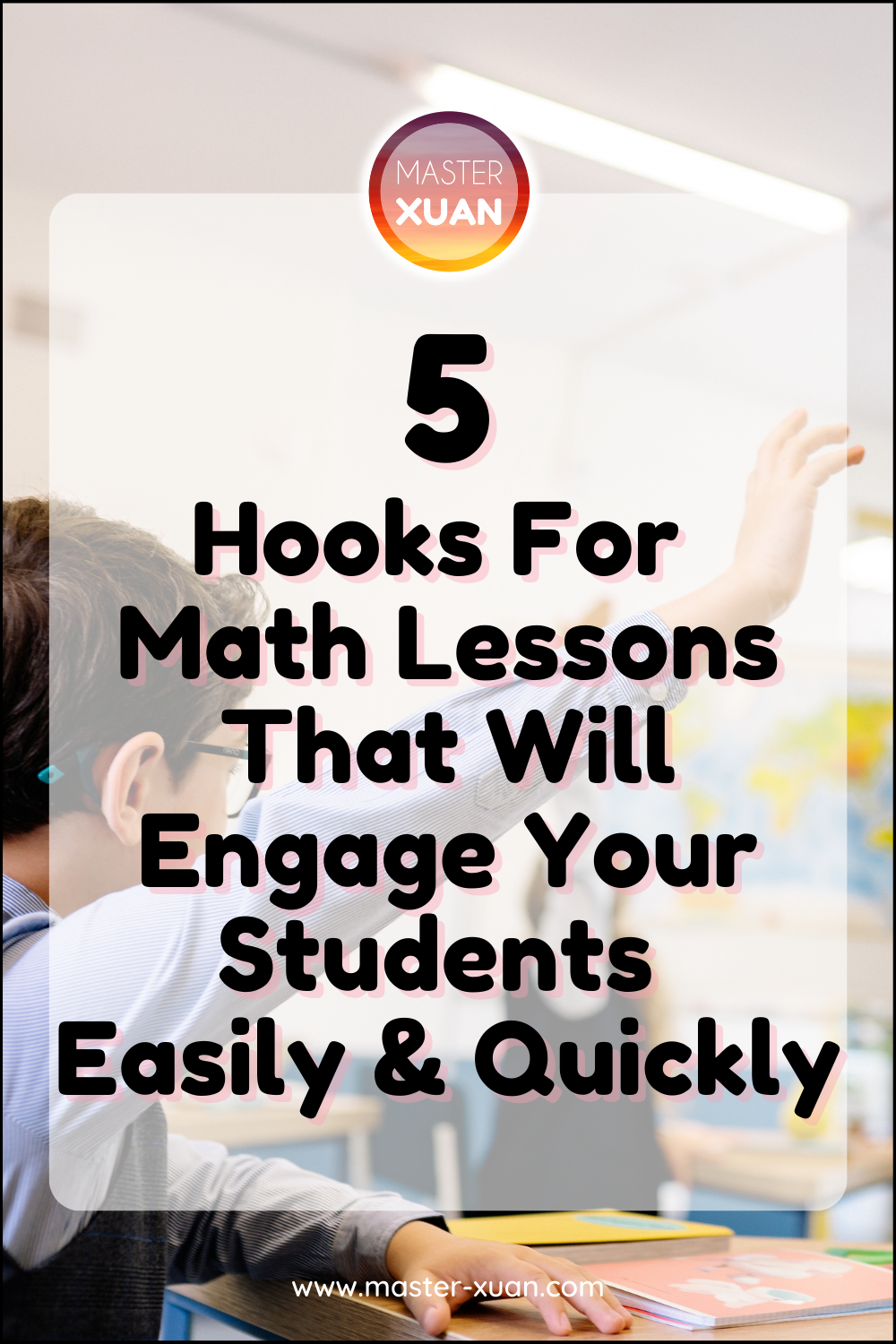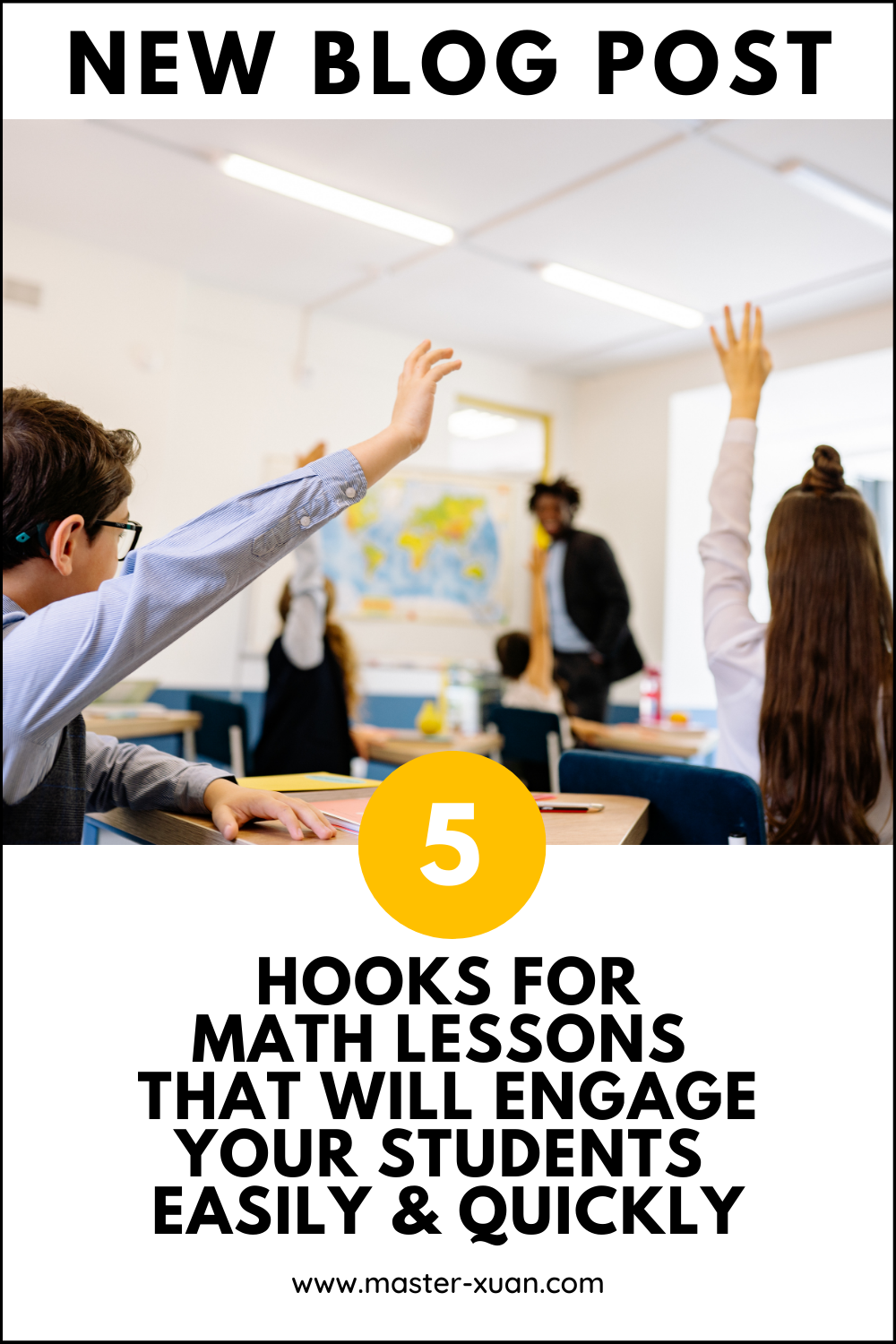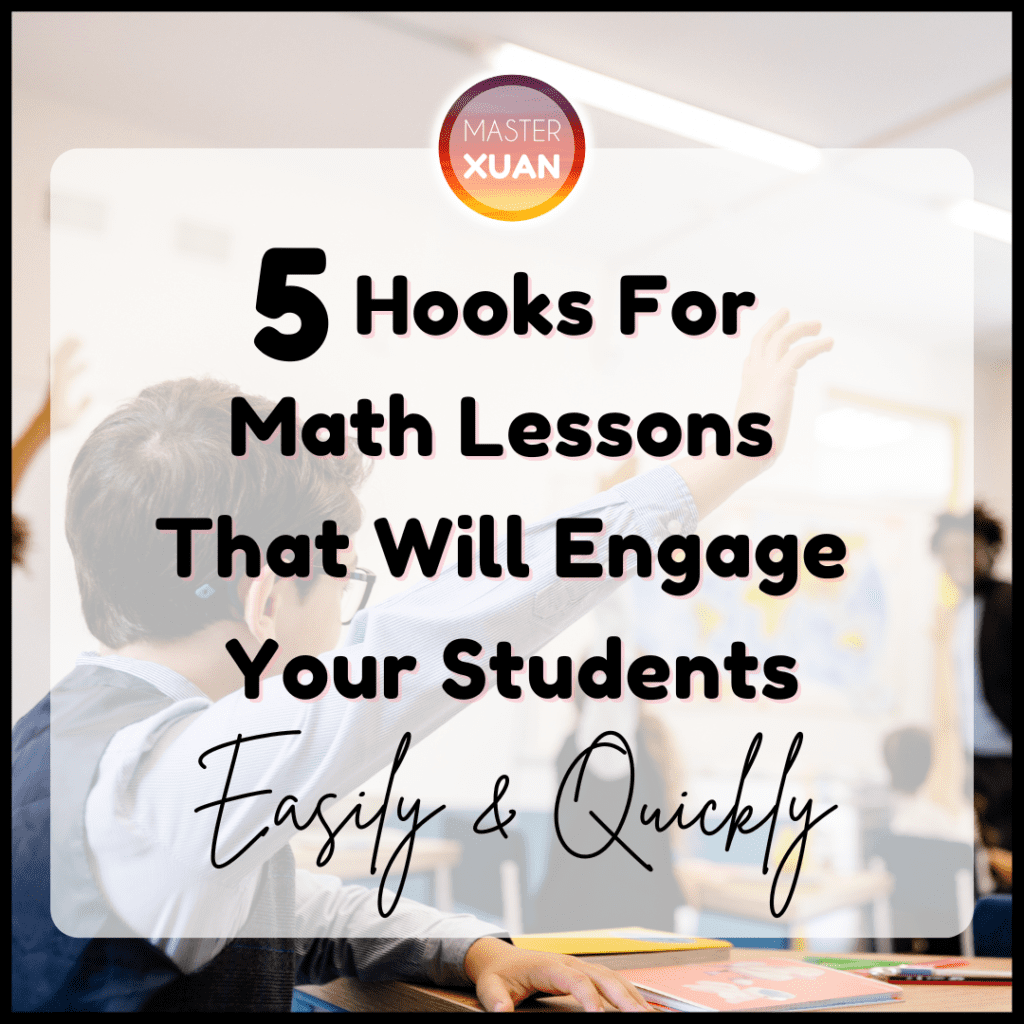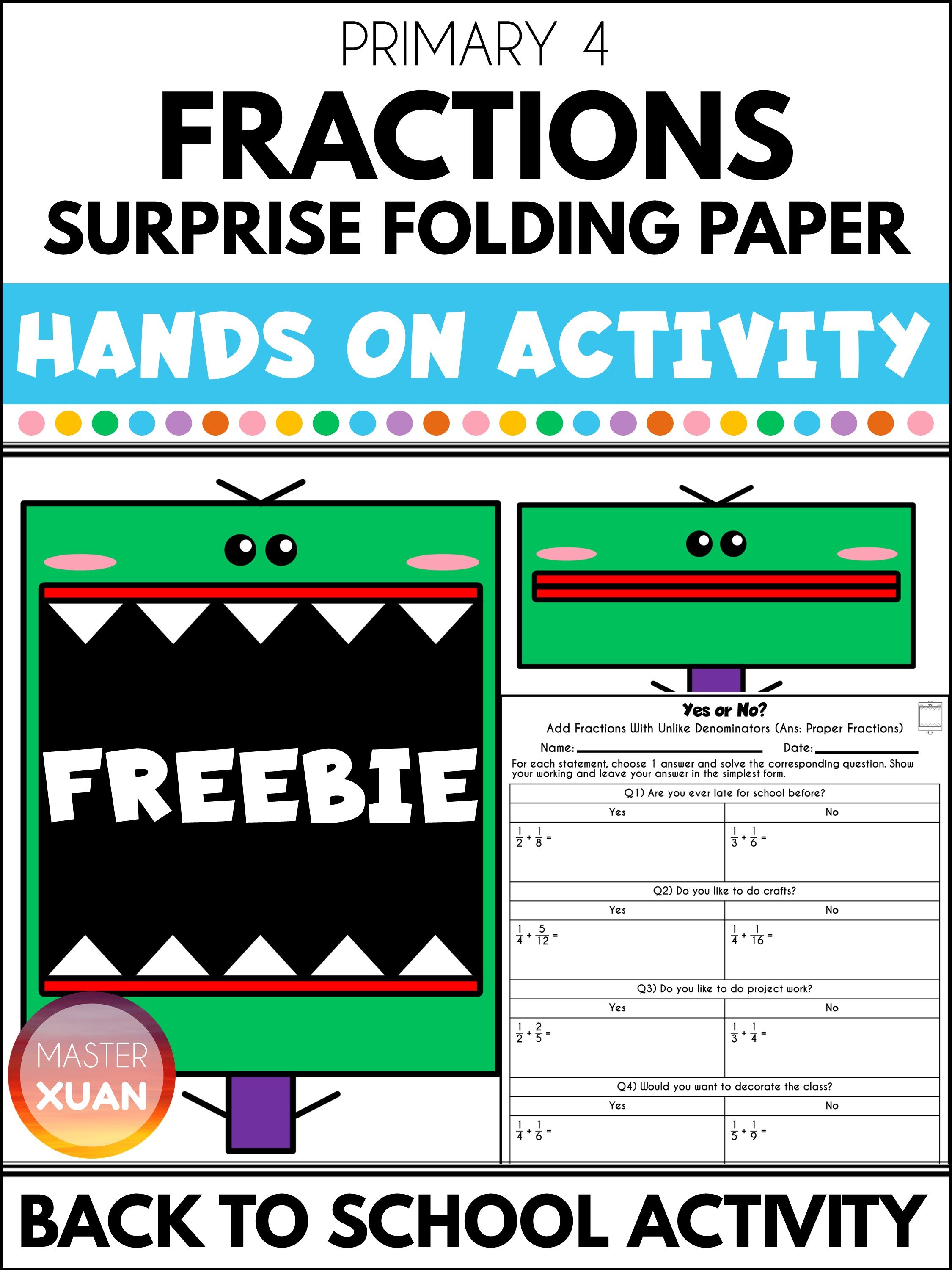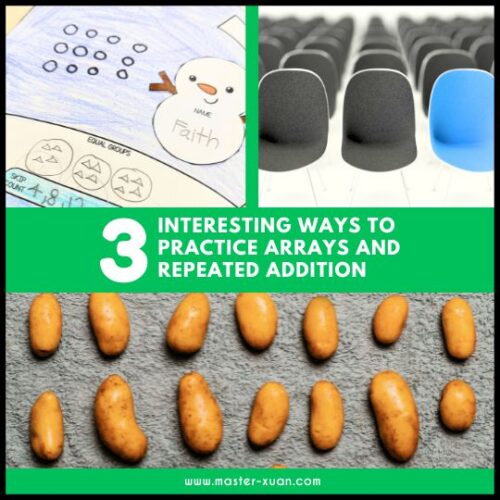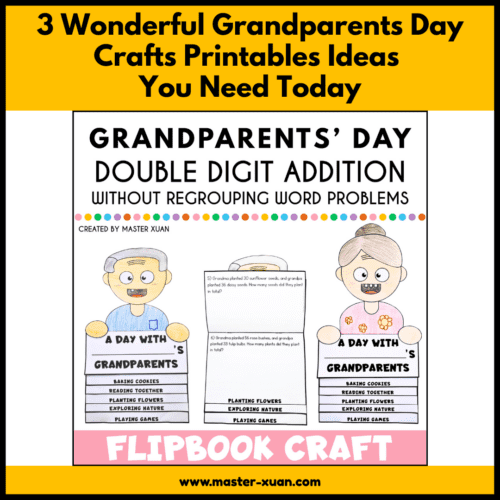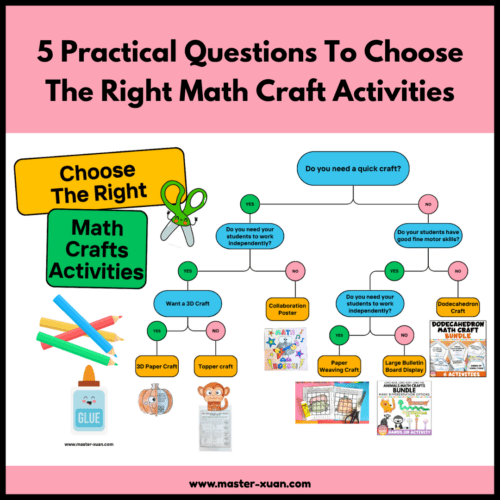Are you in need of hooks for math lessons to start a new topic on the right footing?
Or instead of diving right into learning (nothing wrong with that), maybe you just want to try another way to introduce a math lesson?
You come to the right place!
In this blog post, you will get the answers to the following questions:
- What is hook strategy?
- Why are hooks important?
- What is a good hook for a math lesson?
- What makes a good lesson starter?
- How do you introduce a math lesson?
- What is a fun way to introduce a lesson?
- How to introduce a new topic to students?
What is a hook?
Based on Cambridge dictionary: A hook is “something that is used to attract customers’ attention, and encourage them to buy a product or service”
Similarly, a lesson hook is used by teachers to grab their students’ attention before the lesson or during the introduction and encourage students to be curious about the new learning journey.
Math hooks can also be called math starters.
They function to help students access and apply prior knowledge to the new concept or lesson.
Often, a lesson hook will be engaging, interesting, and short.
Why are hooks for math lessons important?
Possible benefits of Lesson Hooks:
- Grab and keep student attention
- Increase student engagement
- Ignite curiosity
- Reduce negative connotations associated with the topic or subject
- Bring excitement into students’ learning journey
- Make content relatable and relevant
- Open for deeper discussions
- Establish a link between existing knowledge and the new concept
- Deepen learning by activating prior knowledge
- Help master new content
- Can be real FUN
What makes a good lesson starter?
Good math lesson starters are very dependent on the dynamics of your class.
Think about your student’s interests.
- What do they respond to best?
- What theme do they like the most?
- Do they get more excited when it involves kinesthetics or when it is visually stimulating?
And of course, it also has the various functions and benefits mentioned above.
5 hooks for math lessons
Now that you know what is a lesson hook and why is it important, are you hooked?
Below, I have listed 5 math hook ideas that you can implement into your teaching. You can use them in any grade level and any subject.
1) Video Clip
Show students educational videos or songs like Numberock.
It will stimulate their sense of sight and sense of hearing.
Furthermore, they help to introduce the concept to your students for you.
But don’t stop there. Use this to start a conversation with your students.
Ask them what have they learned and can they give you an example that is not shown in the video.
2) Short Game
You can always spark students’ interest with a short game!
Chose a game that reviews prerequisite math skills. This way you can activate students’ prior knowledge and let them make the connection to the new content.
For instance, you can play Metric Conversions Games first to review conversions without decimals. Then introduce to them how to convert measurements with decimals.
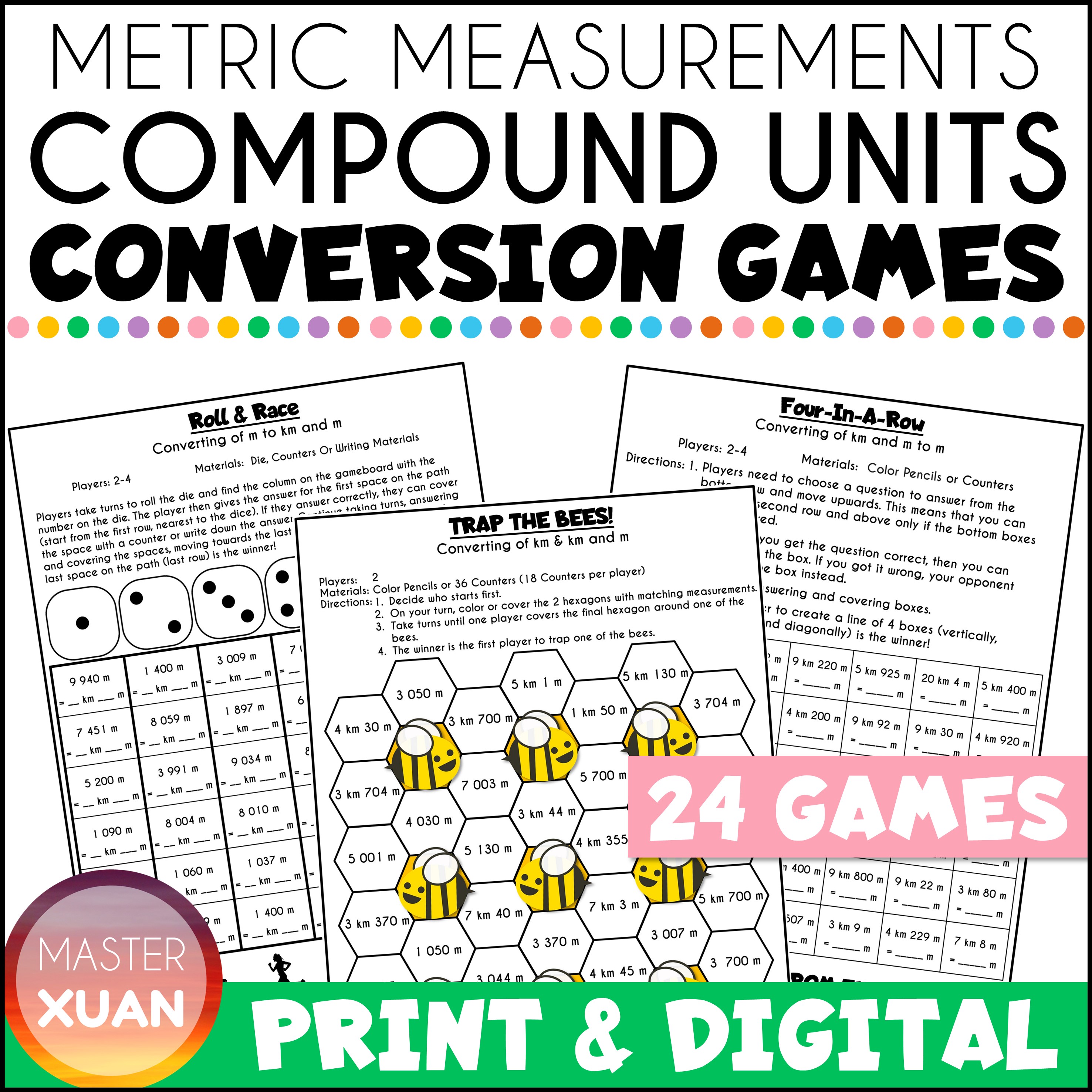
You can play some online games on:
For more resources check out this blog post: 5 Free And Useful Websites For Teaching Resources That Engage Students
Alternatively, you can grab some no-prep printable games.
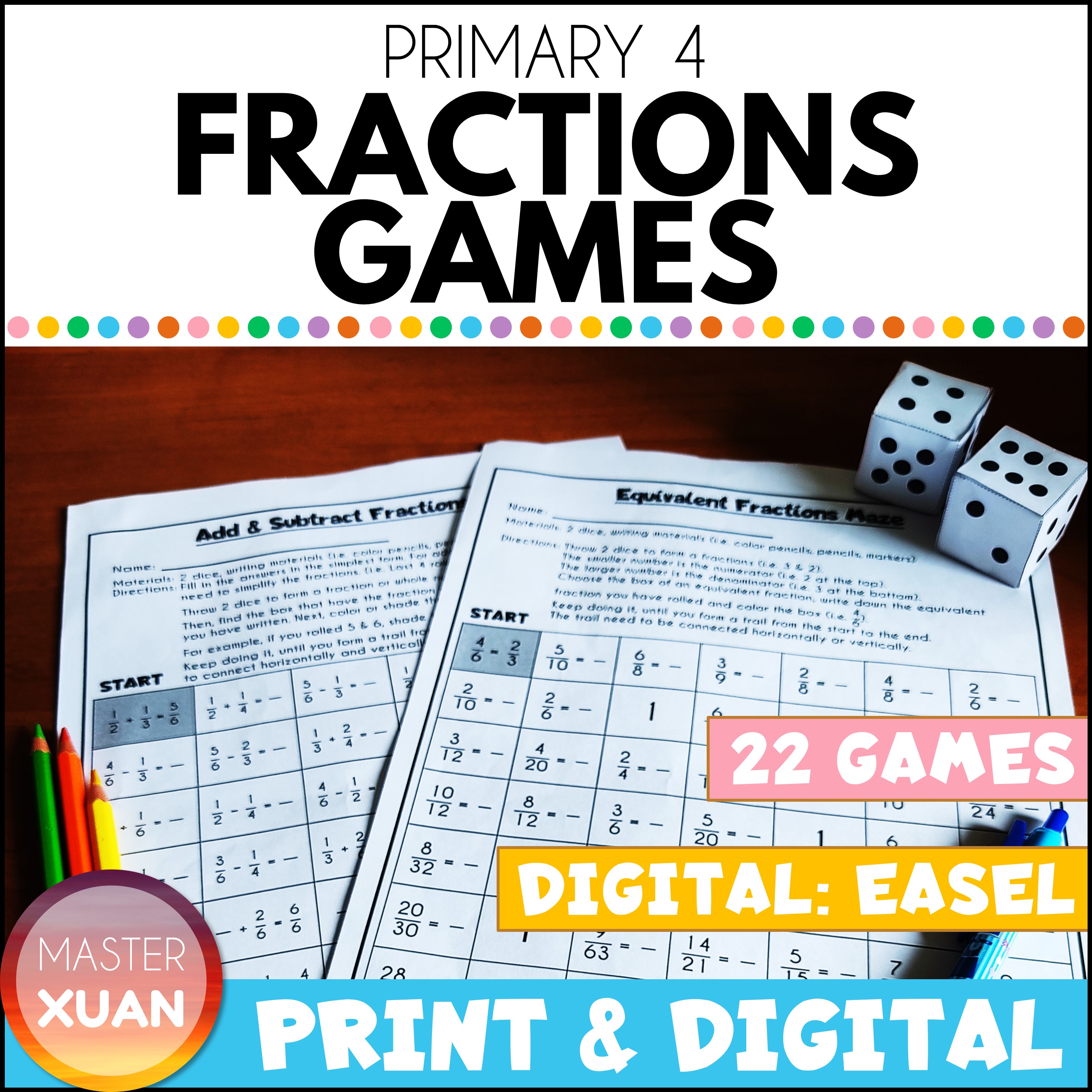
And of course, you can play games that just require dice or cards. The list is endless.
But remember, your goal is not only to review prerequisite math skills, it is also to make the connection or the introduction to a new concept.
3) Kinesthetic Activities
Kinesthetic Activities include hands-on activities, the use of manipulatives, and using body movement. It is a sure way to increase students’ participation.
For instance, when teaching multiplication of 2, give them some pencils to help them act out the following question: There are 3 students. If each student gets 2 pencils, how many pencils do they have altogether?
Let them try even before you teach them. Let them see the pattern for themselves.
Then extend the question: What happens if now there are 4 students?
Alternatively, give them a 100 chart. Let them jump with their fingers as they add 2. Show them how multiplication is like repeated addition.
Hands on activities and crafts also engage students.
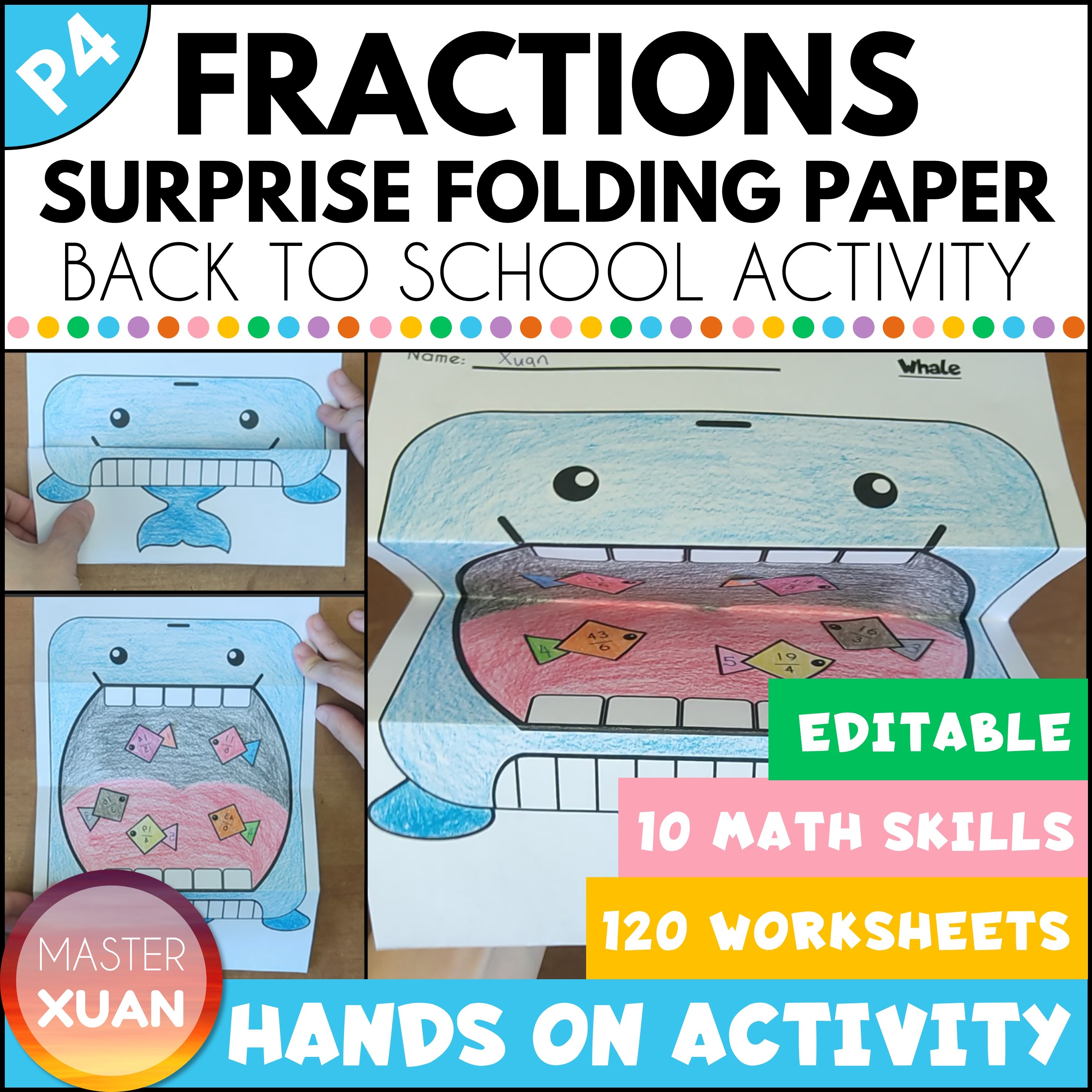
4) Real-World Problem or Question
Pose a real-world problem or question.
Students will be interested and invested as they feel that they can apply their math knowledge.
Example 1
- Show them an advertisement for two items that are having the same percentage discount but of different original prices.
- Ask students which one will they save more or will they save the same amount.
- After students tell you or share their responses with their partners, reveal the actual discount.
- Make a connection to how is it similar to the concept where the same fractions when multiplied with different whole number gives you a different amount.
Example 2
- Ask students to measure the billboard.
- Let them figure out how many papers they need to cover it up.
- Is there a faster way to calculate?
Want more ideas to apply math to the real world to supplement your lesson? Read 5 Real-World Math Activities to Teach the Importance of Numbers.
5) Discussion
- Review a prerequisite skill.
- Explore what will happen when the problem gets more complicated (if you change a sign or the numbers etc).
- Discuss what are the ways to find out the solution to the new concept.
You can use this in hand with the other hooks mentioned above.
Conclusion
I hope you find the above strategies helpful.
If you are just starting off, you can just start off with something simple. And remember, you don’t have to do this for all concepts and topics!
The most important part is don’t just read, take action!
Here are some pins that you can share with your teacher buddy so that they can also use these 5 hooks for math lessons. Save them to your Pinterest Board now! ↓
